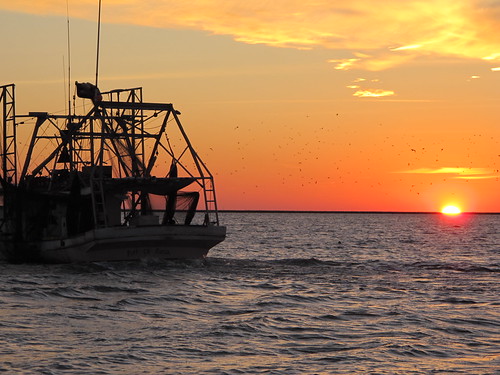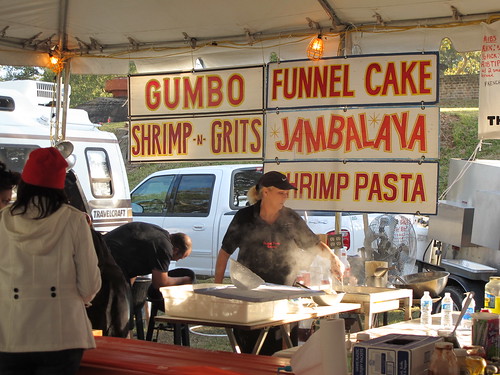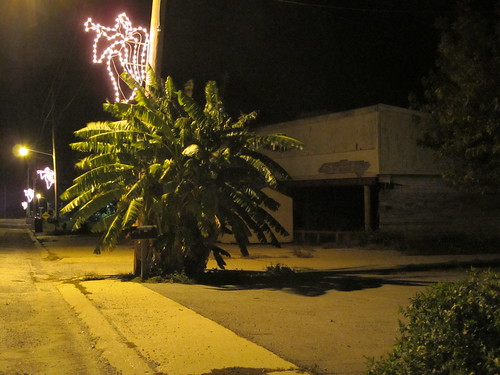A Holiday Season of Hope and Fear in the Oily Gulf
A cold northerly wind blew through the bayous of Louisiana last night, bringing near-frost like conditions and hastening the end of the worst shrimp season in memory. Only the small fry are left, and they too are on the move with their larger brethren, swimming out to sea to feed over the winter. They will wait for warmer temperatures of spring before they return to their spawning grounds of the marsh.
Fishermen believe it will be an especially perilous journey this year after 200 million gallons of oil flowed from BP’s underwater blowout directly in the path of these migrating bottom-dwelling creatures.

Photo by Rocky Kistner/NRDC
Last week, National Public Radio and ABC’s Nightline both filed reports (NPR here and Nightline here) from a cramped miniature submarine on a science mission near the Deepwater Horizon well to examine the impact of the world’s largest maritime oil spill in history.
They found what you might expect after this catastrophe; a mostly lifeless seafloor landscape coated with several inches of what appeared to be an oily substance. Dead coral looked like it had a frosting of petro-slime.
This week, another scientific expedition from the Woods Hole Oceanographic Institution and Pennsylvania State University will do a series of dives that can be followed closely on video on their website. They will shed more light on just what kind of impact the oil and dispersant mix had on the creatures on the sea bottom.
While scientists are hard at work trying to find out exactly what the oil blowout did to the ocean environment, the President’s National Oil Spill Commission is busy investigating the disaster to figure out how to keep it from happening again.
Last week the commission made waves when its lawyers reported that BP likely will dispute the official oil release tally by up to 50 percent. That could mean the company would pay billions of dollars less in fines. Even BP’s over-endowed PR campaign will have a hard time defending that one.
The commission also blasted government agencies for being ill-prepared to deal with the devastating mental health and social consequences of this regional disaster, an economic and cultural shock that reverberates today. The Times Picayunne reported it this way:
Members of the commission said they all had first-hand experience talking to people in the Gulf who said they were suffering physical and mental consequences in the wake of the spill.
"These impacts are far more than economic, it's affected the social structure in very troubling ways, affected families in more ways than dollars and cents," said Commissioner Donald Boesch, president of the University of Maryland Center for Environmental Science and a Louisiana native.
People here in Plaquemines Parish know this. But they are determined to carry on, despite the lack of food, medical care and housing around here. Last weekend, the parish celebrated its biggest party of the year, the Orange Festival, and its return to historic civil war Fort Jackson. The civil war fort is in ruins after being nearly destroyed by Katrina five years ago, and this is the first time parish organizers have been able to host the Orange Festival at the site.


Photos by Rocky Kistner/NRDC
Children packed amusement park rides, while their parents bought giants bags of locally grown oranges and consumed plates full of shrimp Po-Boys, gumbo and jambalaya. Live music blasted rock’n roll to the sunshine filled crowd. Life appeared normal, at least for a few days.
At night in nearby Buras, Christmas has come to town. A row of glowing white angels blowing electric trumpets adorn lamp posts that overlook Katrina-smashed storefronts and houses ripped from their foundations. A bright “Celebrate the Birth of Jesus” sign hangs from in front of the abandoned grocery store, still pocked with holes, rubble and weeds.
It’s an apt metaphor for what this community—and many like it on the Gulf coast—are dealing with in the wake of this disaster. Hope and tradition are still alive, no matter how bleak it appears.


Photos by Rocky Kistner/NRDC
Meanwhile, out in the bays and bayous, a few boats still trawl for the remaining shrimp that are on their march out to sea. Many fisherman believe the oil is still out there on the bottom. All worry what will happen next spring when the shrimp and fish return.
This holiday season, everyone in the bayou is praying for a miracle.
